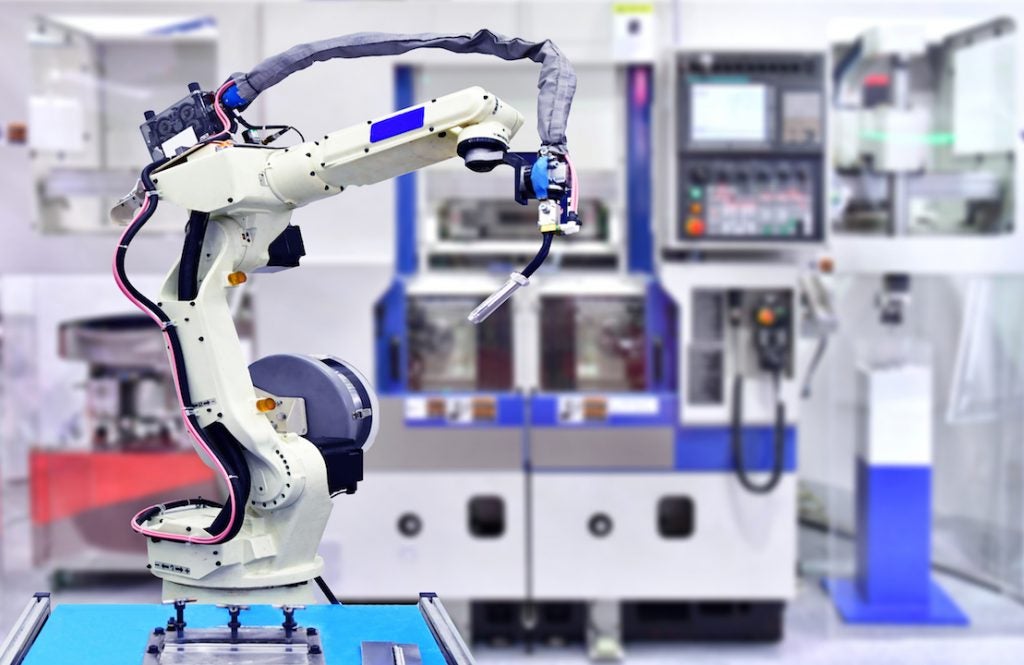World events have created a significant polarising effect within commerce, industry and the service sector. The lines have been drawn between those companies who can operate with a dispersed remote team and those who can’t.
Across the UK, manufacturing sites had to make difficult decisions based both on the economic situation but also the health needs of their workforce.
For some, the decisions revolved around scaling back operations and not having as many personnel in their premises.
For others, they had to actually recruit more employees to meet the demand for their products when the message to keep people at home was drumming loud and clear.
It will not always be this way.
Moving towards a reliance on machines
Even before the pandemic, the manufacturing landscape of the future was set for change thanks to the rapid advancement in digital workplace software. So what will manufacturing look like in five or ten years?
Of course, it will increasingly rely on AI, robotics, and automation to streamline, speed up and economise production lines.

The Industrial Internet of Things (IIoT) supports this, and data will be driving ever more functions and tasks. Employees will be needed less and less to actually deliver processes and instead they will oversee them.
Will the human workforce control this from a series of devices using digital workplace software, by having a presence on the factory floor?
Where will the overseers be?
The truth is that manufacturing of the future may not even require this level of proximity.
It could well be that production in a factory can be controlled and monitored from anywhere in the world.
From this basis, manufacturing leaders can run multiple production lines, in various locations, efficiently and around the clock without leaving their office.
Autonomous technology picks and transports inventory and feeds machines. Robotics move goods around, pack and load delivery vehicles. Notifications alert managers to issues at any point in the line, diagnostics highlight the issue, and then programming in new instructions solves it. Though a technician will have to be sent in for any lingering recalibration tasks that have to be done manually.
The notifications of problems or order specifications and changes won’t even need to be on a centralised computer system of course. They could appear on the manager’s wearable technology during their morning jog or lunch meeting with business contacts.

Perhaps to illustrate instructions to the tech team, the manager will then send a file containing an augmented reality image, so they can work through the issue ‘virtually’ before going on site.
This may all sound far fetched, but it’s already beginning to take shape now.
What’s the future manufacturing role for humans?
Where does this leave your employees? Are the human-less factories that science fiction novels foretold on their way, with manufacturing sites entirely run by robots?
This is why STEM study and upskilling is so vital to businesses, and brings us back to the subject of remote working in an industrial sector. However, future employees will not all be programmers, technicians and data analysts.
Manufacturing employees of the future could also be working from home. It is possible that they – like many of the service industry peers – can fulfil their roles and responsibilities entirely digitally.
From their work device, they can log onto a secure intranet system and complete their tasks for the day. Anything new they need to assimilate would come from an integrated learning management system.
What roles will they play? Marketing and sales will always pivot on relationship building, even if AI develops highly sophisticated negotiating skills and contractual arrangements become automated.
Equally, it seems likely that negotiating with suppliers and building those relationships will perennially require the human touch.

Your living, breathing personnel will also still have crucial seats within project management teams; collaborating digitally to problem solve, manage resources, check productions schedules and orchestrate mobile remote workers or other logistics.
Managers will also be needed to collaborate on the best use of predictive data, and to agree on business developments and find new opportunities too.
In effect, the manufacturing workforce of the future will not be manufacturing operatives. They will be part of the service sector, using digital workforce systems to support technology, which fulfils all manufacturing processes.
How to build a factory of the future
These musings about the future of manufacturing are important. They enable forward-looking organisations to start sketching out business models for growth and development.
The signs are clear that having control and transparency over business operations, from a distance, is now imperative for all sectors of industry and commerce.
It starts with making sure that you have enough staff who are confident and competent in using emerging technology, willing and able to be flexible, and constantly learning new techniques and data skills. In other words, a technologically intelligent team.
You also need to invest in a scalable and adaptable digital workplace software. With systems and tools that match your business operations now, but which also open windows to new ways of working. Ways that enable greater productivity and profitability, but which also get global manufacturing ready to cope with anything.





